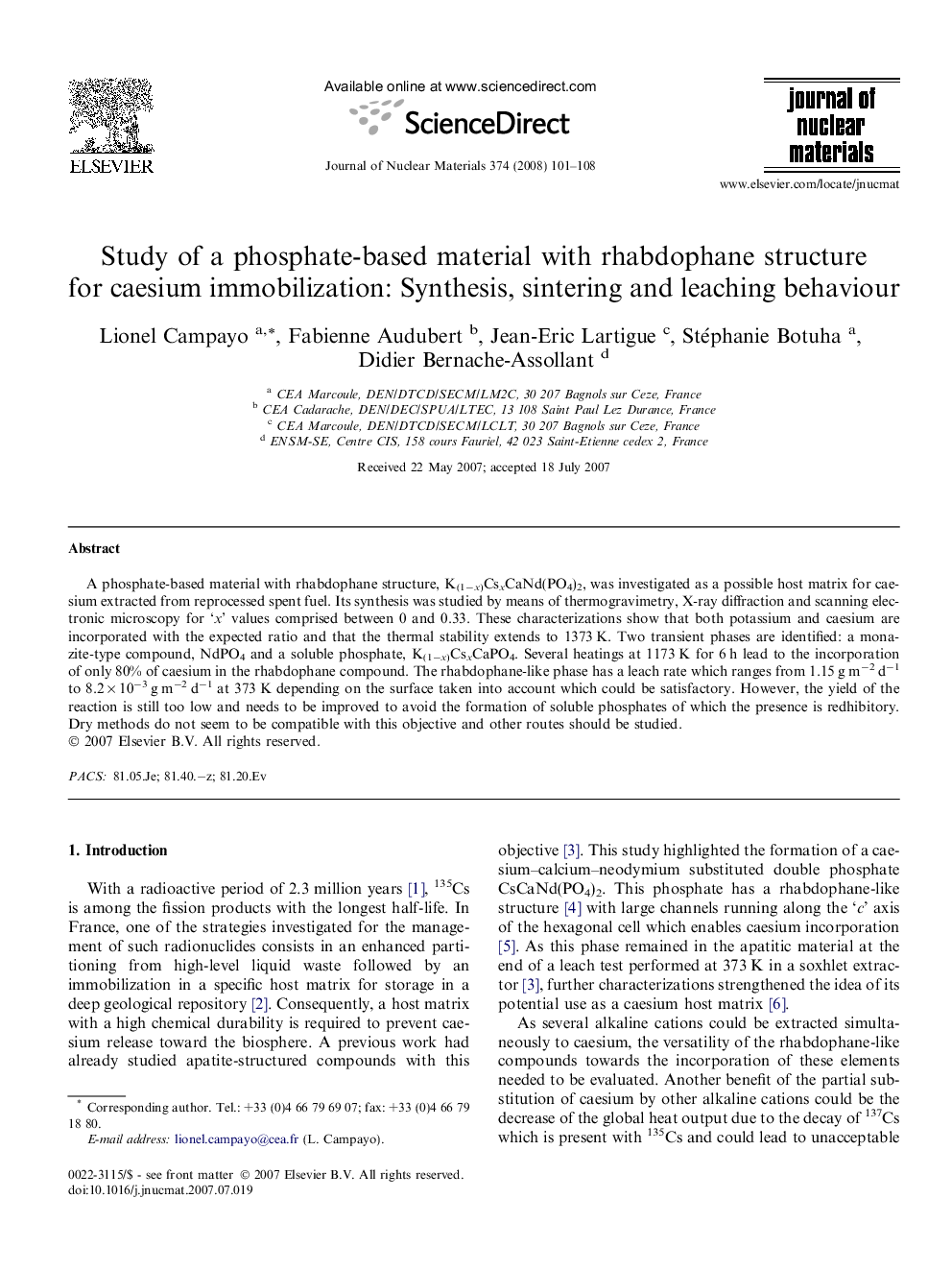| Article ID | Journal | Published Year | Pages | File Type |
|---|---|---|---|---|
| 1568856 | Journal of Nuclear Materials | 2008 | 8 Pages |
A phosphate-based material with rhabdophane structure, K(1−x)CsxCaNd(PO4)2, was investigated as a possible host matrix for caesium extracted from reprocessed spent fuel. Its synthesis was studied by means of thermogravimetry, X-ray diffraction and scanning electronic microscopy for ‘x’ values comprised between 0 and 0.33. These characterizations show that both potassium and caesium are incorporated with the expected ratio and that the thermal stability extends to 1373 K. Two transient phases are identified: a monazite-type compound, NdPO4 and a soluble phosphate, K(1−x)CsxCaPO4. Several heatings at 1173 K for 6 h lead to the incorporation of only 80% of caesium in the rhabdophane compound. The rhabdophane-like phase has a leach rate which ranges from 1.15 g m−2 d−1 to 8.2 × 10−3 g m−2 d−1 at 373 K depending on the surface taken into account which could be satisfactory. However, the yield of the reaction is still too low and needs to be improved to avoid the formation of soluble phosphates of which the presence is redhibitory. Dry methods do not seem to be compatible with this objective and other routes should be studied.
